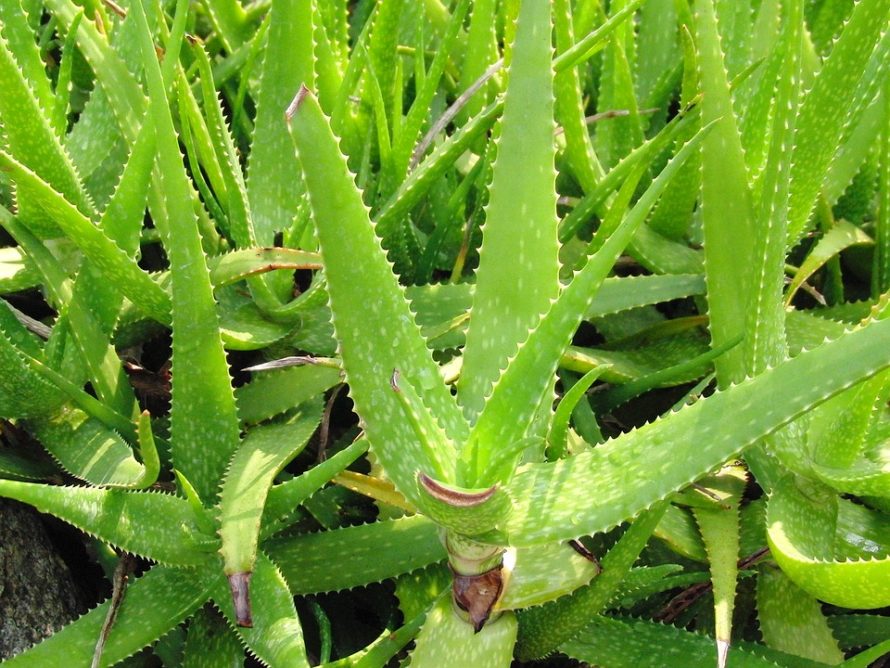
Aloe vera flowers
Aloe vera (Aloe vera) is a perennial succulent that is native to the Arabian Peninsula but has naturalized around the world in tropical regions. It has a long history as a medicinal plant though modern science can’t find any evidence supporting medicinal uses. Most of us keep an aloe vera plant in our kitchens to use its sap to treat minor burns that occur while cooking.
Aloe vera does have soothing moisturizing properties so cosmetics manufacturers often use the sap in their produces. Makers of facial tissues also use an aloe extract in their products to prevent irritation.
It is important to note that while it is safe to use aloe vera sap topically, it should never be ingested. It can cause abdominal cramps and diarrhea. Some studies suggest that it is also a carcinogen.
Aloe vera plants are hardy in zones 8 through 11. They are succulents and drought tolerant requiring full sun and well-drained soil. The leaves are fleshy and either solid green or spotted. The edges of the leaves are serrated with small teeth. The leaves grow in the form of a rosette from the bottom of the plants. The plants can grow to 3 feet, but more usually are only 1 to 2 feet tall.
The flowers grow on stalks that are 3 feet tall. The stalks each support a number of pendulous yellow flowers. Flowers are produced in the summer.
Aloe vera should be grown in wide, shallow pots because its roots are shallow. Shallow pots also have the advantage of drying out quickly so that your plants won’t be in constantly moist soil that could cause root rot. Clay pots are preferable for the same reason. They are porous and allow the soil to dry out quickly. Use a potting soil mixed specifically for cacti and succulents. Alternatively, you could add coarse sand or perlite to a regular houseplant potting soil to provide extra drainage.
Fertilize sparingly. Either use a full strength houseplant fertilizer once a year in the spring or half strength houseplant fertilizer no more than once a month during the spring and summer. Your plants should not be fertilized in the winter when they are resting.
Water sparingly also. These are drought tolerant plants that are prone to root rot if they encounter too much moisture. Wait until the soil is dry at least 1 inch deep, preferably 2 inches. Then water thoroughly, saturating the pot. If you have a saucer under the pot, be sure to empty. Don’t allow your plant to sit in water.
Aloe vera can be grown from seed, but the easiest way to propagate them is division. The plants produce “pups” which are baby plants that are attached to the parent plants. Simply take a sharp knife and cut the pup off of the parent. Then allow it to sit in in bright sunlight for about a week. This allows a callous to form where the cut was made. Plant the pup in its own pot but don’t water it for another week. This allows the plant to acclimate to being potted and start growing roots without the possibility of root rot from overly moist soil. After you have waited the week, you can begin to water it like you do the adults.

